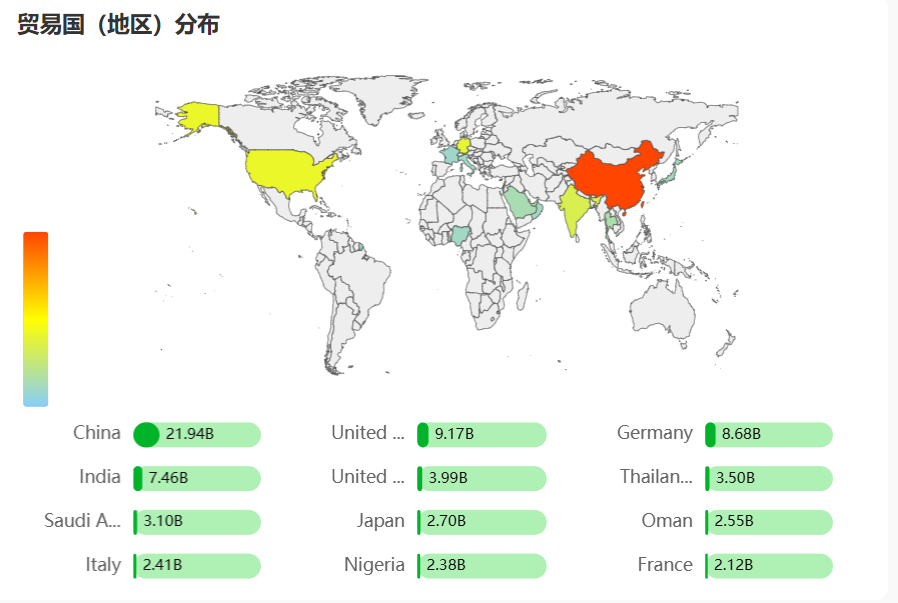
South Sudan’s main trading countries
South Sudan, a relatively young nation that gained independence in 2011, relies heavily on international trade to sustain its economy. Its trading relationships are shaped by its oil-dependent economy, limited manufacturing sector, and need for essential imports. Below is an overview of South Sudan’s main trading countries:
Key Export Partners
1. China:
South Sudan’s primary export commodity is crude oil, which constitutes over 90% of its total exports. China is the largest buyer of South Sudanese oil, with Chinese companies like the China National Petroleum Corporation (CNPC) playing a significant role in the country’s oil production and export. Oil exports to China generate the bulk of South Sudan’s foreign revenue.
2. India:
India is another major importer of South Sudan’s crude oil. Its rapidly growing energy needs make it a crucial trading partner for the oil-rich nation.
3. Malaysia:
Malaysia, through its state-owned company Petronas, has interests in South Sudan’s oil sector and is also a significant importer of its crude oil. The country’s relationship with South Sudan is driven by energy demand.
4. Sudan:
Despite past conflicts, Sudan remains an important trading partner due to shared infrastructure. South Sudan relies on Sudan’s pipelines and port facilities at Port Sudan to export its crude oil. In return, South Sudan pays transit fees to Sudan, making this relationship mutually essential for trade.
Key Import Partners
1. Uganda:
Uganda is one of South Sudan’s most significant trading partners for imports. The country supplies South Sudan with essential goods such as food products, construction materials, and consumer goods. The trade route between Kampala and Juba is vital for the movement of goods.
2. Kenya:
Kenya plays a key role in supplying South Sudan with imported goods, including machinery, vehicles, and manufactured products. The Port of Mombasa serves as a critical entry point for South Sudan’s imports.
3. China:
In addition to being a key export partner, China is a significant source of imports for South Sudan. The country provides machinery, vehicles, electronics, and construction materials that are essential for South Sudan’s development projects.
4. Ethiopia:
Ethiopia supplies South Sudan with agricultural products, textiles, and manufactured goods. The countries share a border, and Ethiopia’s proximity makes it a practical trade partner.
Challenges and Opportunities
South Sudan’s trade relationships are influenced by its landlocked geography, dependency on oil, and underdeveloped infrastructure. The country’s reliance on Sudan for oil export logistics often creates political and economic vulnerabilities. Additionally, trade routes are frequently disrupted by insecurity and poor road conditions, increasing costs and delays.
There are opportunities for South Sudan to diversify its economy by developing sectors like agriculture, mining, and manufacturing. Expanding trade relations with neighboring countries and global partners could reduce dependency on oil and foster economic resilience.
Conclusion
South Sudan’s main trading countries reflect its dependence on oil exports and imported goods to sustain its economy. China, India, and Sudan dominate as export partners, while Uganda, Kenya, and China are critical for imports. Strengthening trade infrastructure, improving security, and diversifying exports are essential for South Sudan’s economic growth and stability. These efforts could help the country solidify its relationships with existing partners and establish new ones, boosting its integration into the global economy.




Leave a Reply